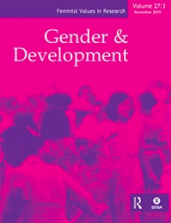HIV/AIDS, globalisation and the international women’s movement

Overview
The spread of the HIV/AIDS pandemic is closely connected to processes of globalisation in the South and, in particular, in Africa. It is clear that, for the most part, these processes are bad for poor people, women, and a range of marginalised groups, both within the global South and in some communities within the North. While globalisation certainly has a strong relationship to AIDS, groups such as the Treatment Action Campaign Treatment Action Campaign, a movement begun by and for people living with HIV/AIDS in South Africa, which began in the late 1990s. are fighting back and demonstrating that in the new world order the need for a vigilant civil society is all the more important. At the global level, feminists from the North have not as yet engaged with HIV/AIDS as a critical issue. Given that in my country (South Africa), HIV prevalence hovers at about 22 per cent, and not a weekend goes by without a funeral of someone my age whose death no one can explain, it feels like there is an almost deafening silence on AIDS in the global women’s movement. In this article, I propose that by analysing the complex intersections between different forms of inequality, I have based my idea of ‘intersectionality’ on Kimberley Crenshaw’s definition: for her, intersectionality is about ‘challenging those groups that are home to us, in the name of those parts of ourselves that don’t feel so at home’ (Crenshaw Williams 1994). feminists from the South can move such critical issues further up the global agenda.
This article is hosted by our co-publisher Taylor & Francis. For the full table of contents for this and previous issues of this journal, please visit the Gender and Development website.
Additional details
Author(s)
How to cite this resource
Citation styles vary so we recommend you check what is appropriate for your context. You may choose to cite Oxfam resources as follows:
Author(s)/Editor(s). (Year of publication). Title and sub-title. Place of publication: name of publisher. DOI (where available). URL
Our FAQs page has some examples of this approach.


